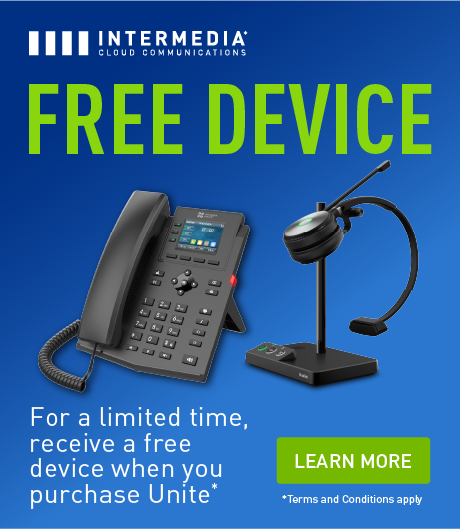As businesses normalize flexible, remote, and hybrid work models, the procedures employees must follow regarding device usage must evolve. One of the most important is managing BYOD (Bring Your Own Device). In response to your staff’s use of their laptops, smartphones, and tablets, you’ll need to develop and implement a BYOD policy.
If you’re seeking guidance on how to do this, you’ll want to read this post for tips, strategies, and suggestions.
BYOD Benefits and Challenges
BYOD usage can deliver advantages to organizations and workers. It allows them to be flexible and mobile. Additionally, it often leads to higher productivity and reduces costs as it negates the need for company-issued devices. In today’s environment, you can literally run a business from a mobile device.
However, managing a massive influx of new devices has its challenges, and only half of companies have a security policy around their usage.
In looking at the gravest security concerns, IT named data leakage, users downloading unsafe apps or content, and lost or stolen devices at the top. The same research revealed that 25 percent of organizations found malware downloaded onto BYO devices.
As with anything in the technical realm, there is inherent risk. You must balance convenience and efficiency with security. With a robust BYOD policy, you can achieve this.
What Is a BYOD Policy?
A BYOD policy describes the rules that govern how employees should use their personal devices in the workplace. The construction of such guidelines comes from IT teams. The set of directives should include how employees can access company networks and applications, such as unified communications and email. It provides employees with expectations around security and using their personal devices.
Next, we’ll look at what a policy should include and how to implement it successfully.
Components of a BYOD Policy
The rules of BYOD specifically demonstrate how workers can use their own devices in the most secure manner. Here are some elements to include.
Access Guidelines
BYOD intends to make access convenient, but it also must be secure. This starts with how they set up email, messaging, and other channels. Smartphones have an email app, but it’s not as secure as someone using the Microsoft Outlook app. You’ll need to communicate that this is the safest way to access email.
For other platforms, you’ll also need to insist on using your UCaaS (Unified Communications as a Service) app for phone, chat, video calls, and file sharing.
Device Authentication Measures
Your BYOD policy should include additional device authentication measures with two-factor authentication (2FA). It adds another layer of security. You can also require re-authentication on devices and mandatory password requirements and how often to change them.
Types of Devices Allowed
Not every device should be welcome in BYOD, so clarify which ones are acceptable. Much of this will relate to the age of the device and the operating system it’s using. For example, you might limit BYOD to smartphones from the last three years. The reasoning is that older devices are more vulnerable.
Transparent Disclosures
Any technical policy should include disclosures regarding risk, liabilities, and disclaimers. IT and legal experts can work together on these. Ensure that they are clear and understandable to employees.
Provisions for All BYOD Users
The meat of the policy will review several provisions, including:
- Passwords should be strong with a definition of what this means (e.g., uppercase letters, numbers, symbols).
- Encryption should be in place for any data transfers, and those transfers should only occur on approved devices.
- Privacy declarations for both employees and company data.
- Informing employees on expectations around support and maintenance from IT regarding personal devices, including how often they need to update business apps and the vetting process of IT for adding them to a network.
These are the key elements of a BYOD policy. Share it with all employees as soon as they onboard. In most situations, employees should sign off that they acknowledge and understand it.
Now that you have documented rules, let’s look at how to implement them in your company.
Tips for Implementing Your BYOD Policy
Having a policy is only the start. Now you have to establish and ensure adoption across the enterprise. Here are some best practices to do so.
Inform and Educate
Begin BYOD education from day one with the policy shared on an employee’s first day. Let them review it and provide them with a way to ask questions. They’ll then need to comply with it and provide their device to IT if necessary.
Use Mobile Device Management
MDM (Mobile Device Management) allows IT to oversee the security of phone usage. It’s deliverable via networks, apps, or the cloud to secure data, monitor tasks, and issue restrictions.
Require Anti-Malware Tech
You can’t trust individuals to have the latest and greatest malware deterrents. You can reduce the risk of cyber-attacks on BYOD by installing this across the employee base. You’ll need to advise that this is imperative, as it protects their device and your network.
Ensure Users Know What to Do If a Device Is Lost or Stolen
With so many devices to manage, you’ll certainly expect some to be lost or stolen. Should this occur, you’ll need a strategy in place. Proactively, you can install software for a data wipe. Communicate the plan to BYOD users, so they know what to do if such an event occurs.
Remember to update your policy often and keep it top of mind for employees. Your best move is to start with a UCaaS solution that’s secure by design and supports BYOD. You’ll find that and more with Intermedia Unite. Explore its features today.
January 18, 2023
Explore other posts on these topics: Unified Communications





